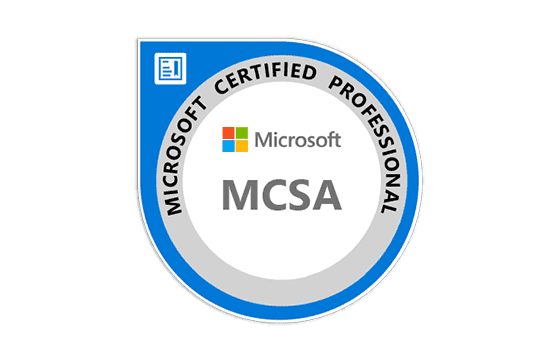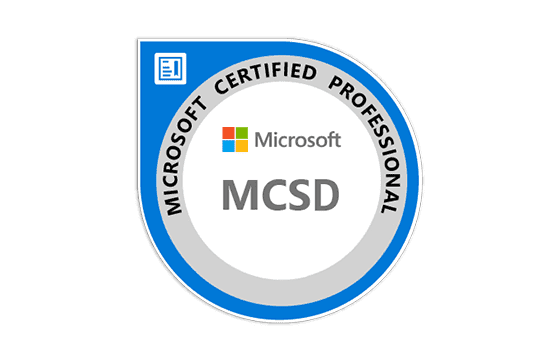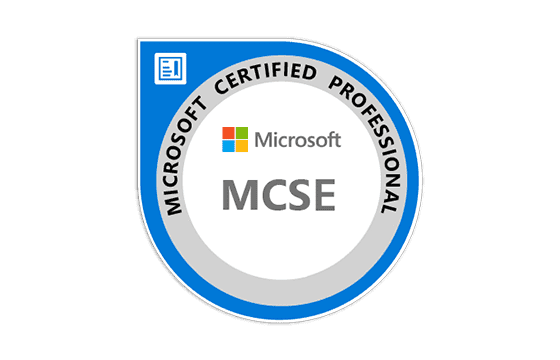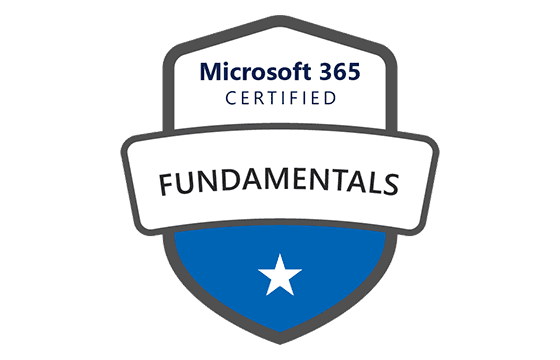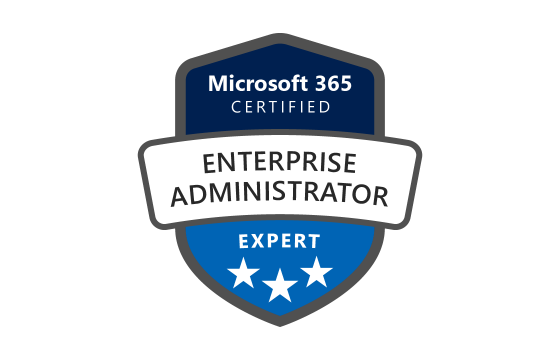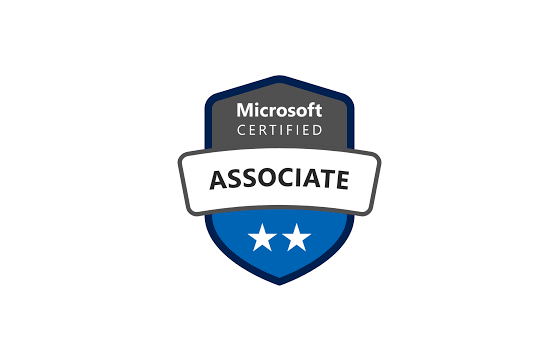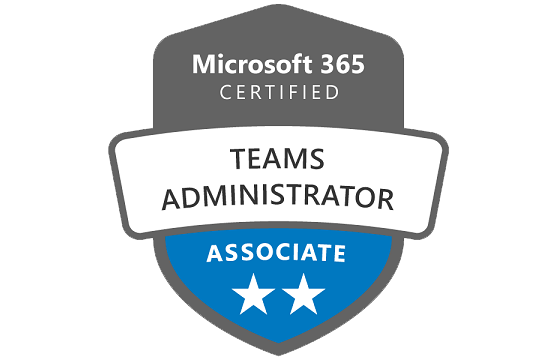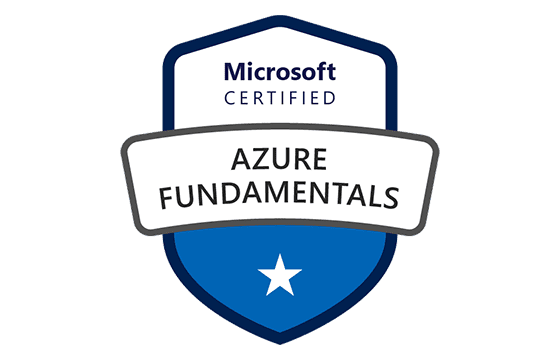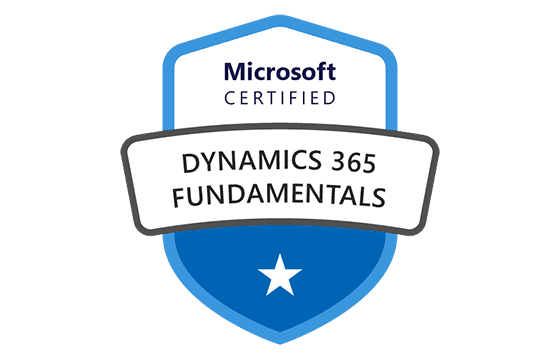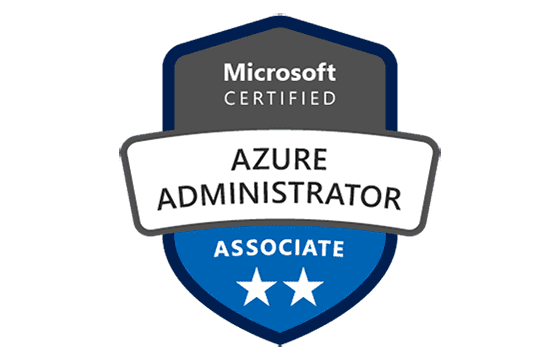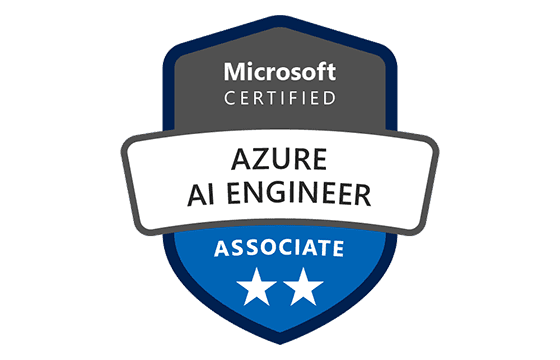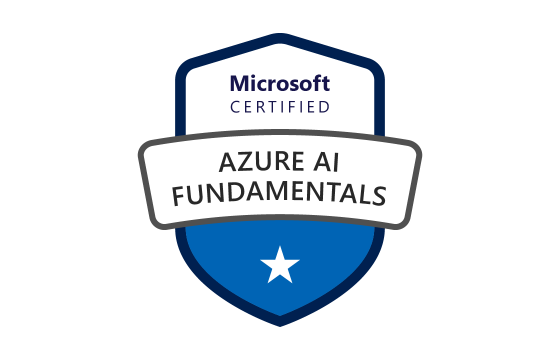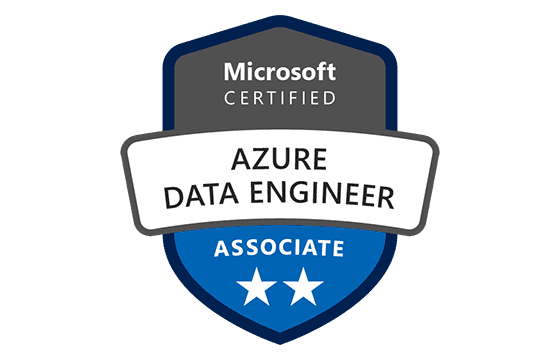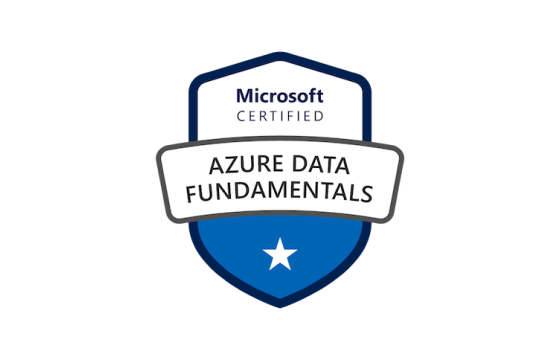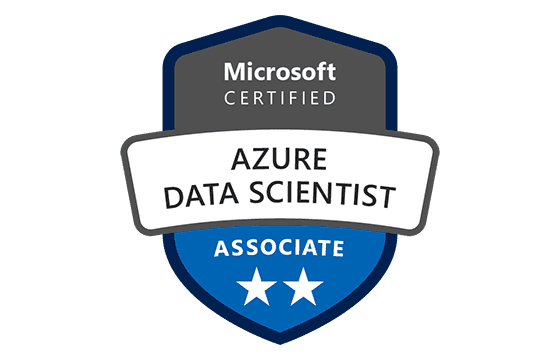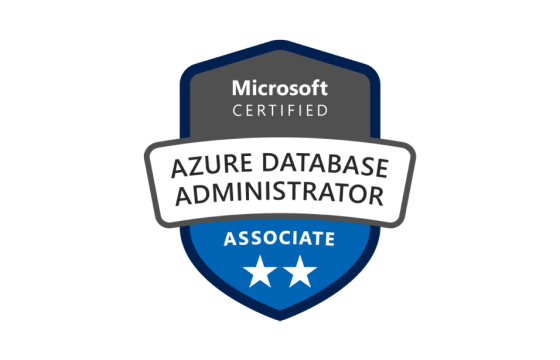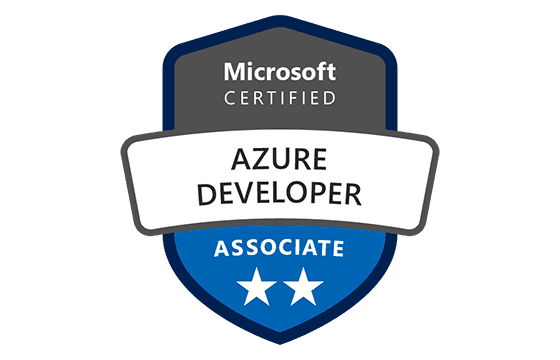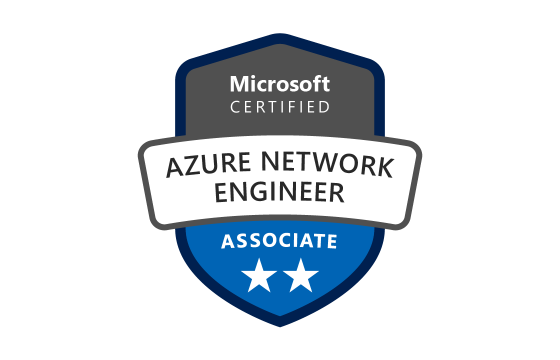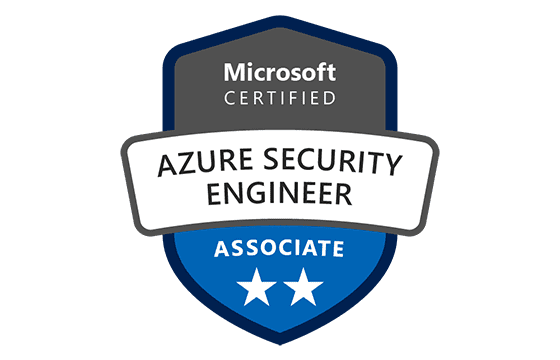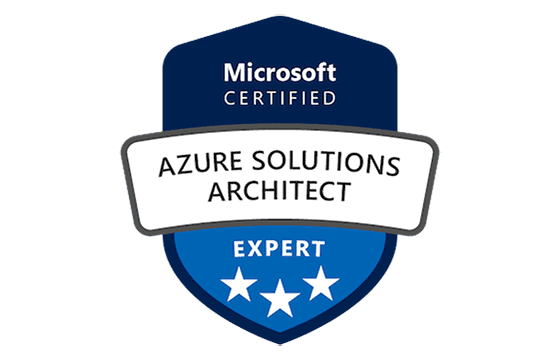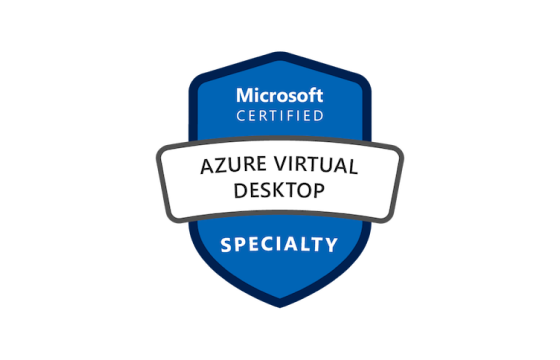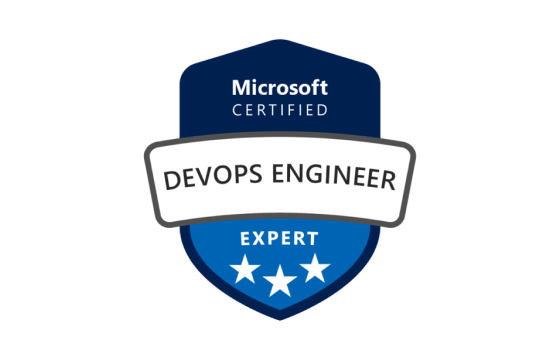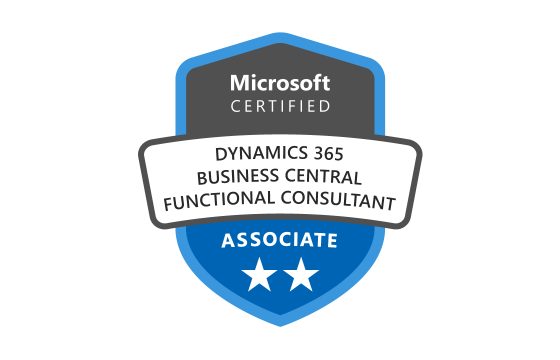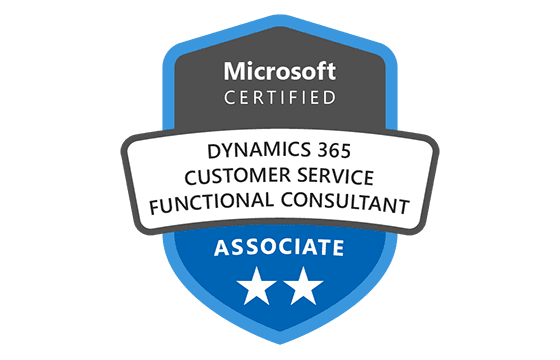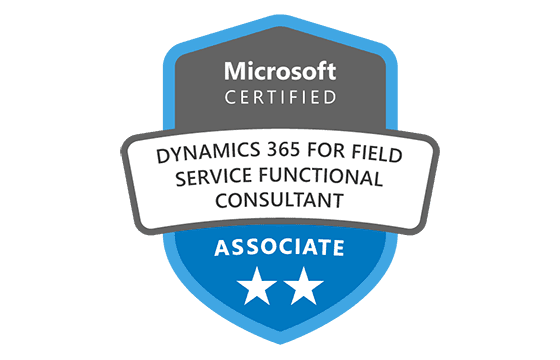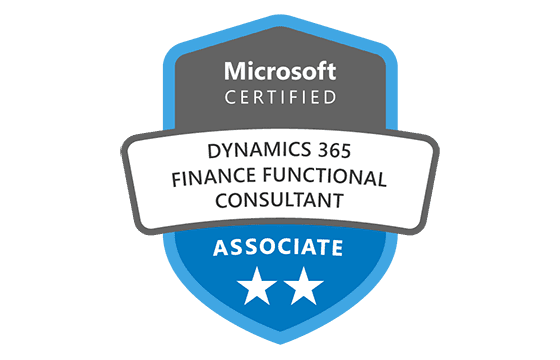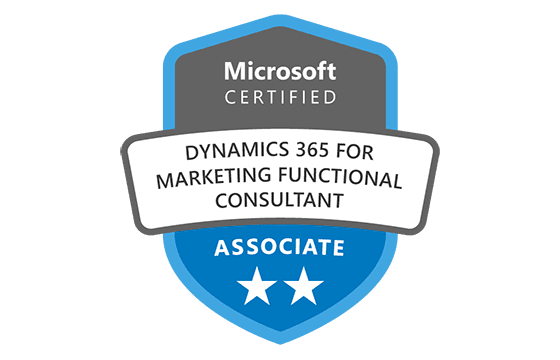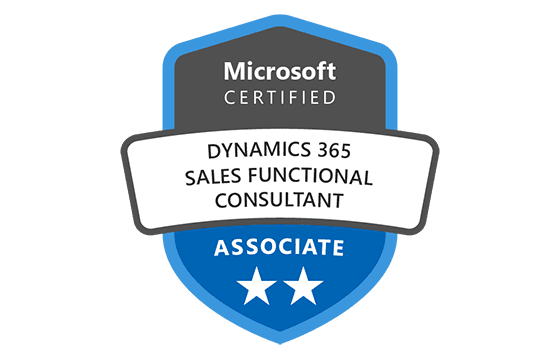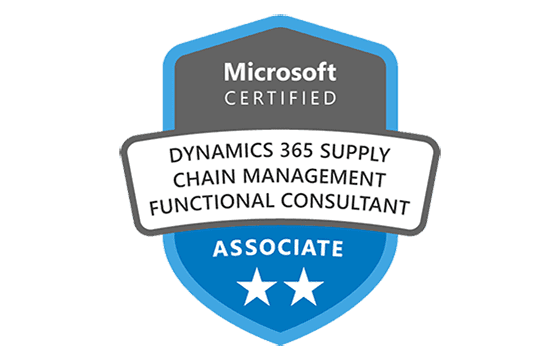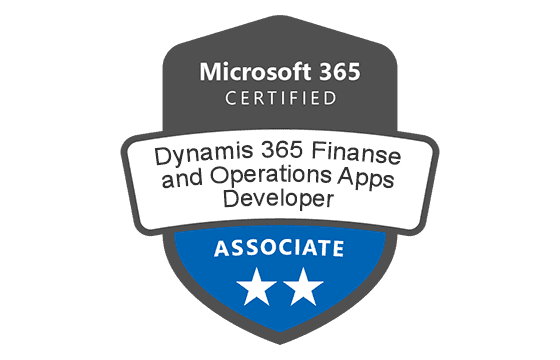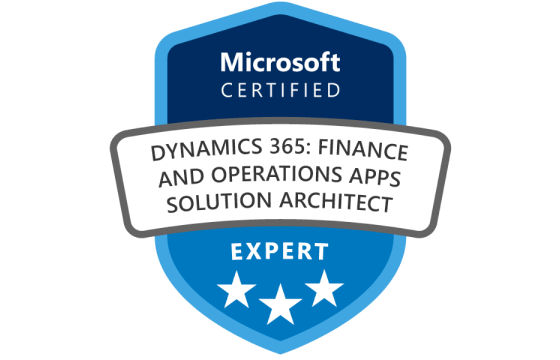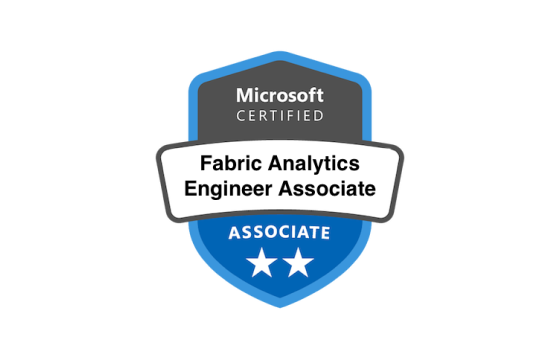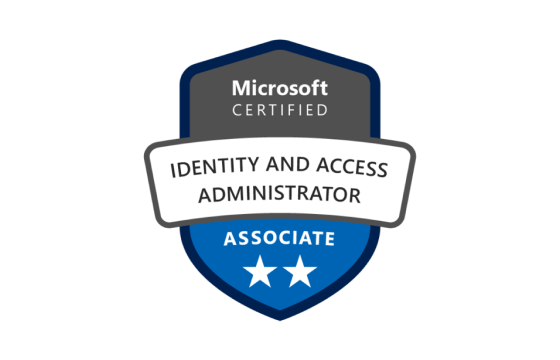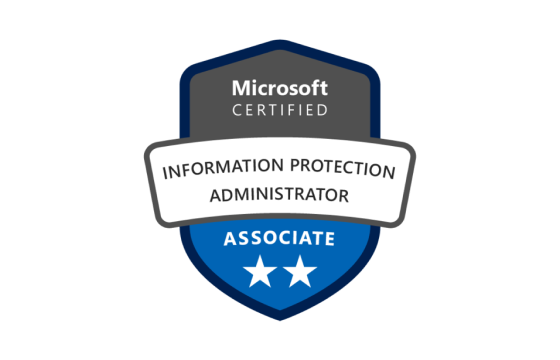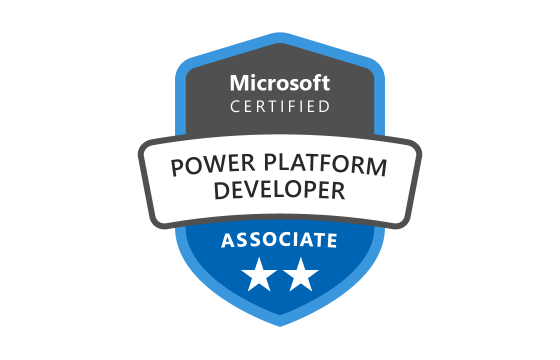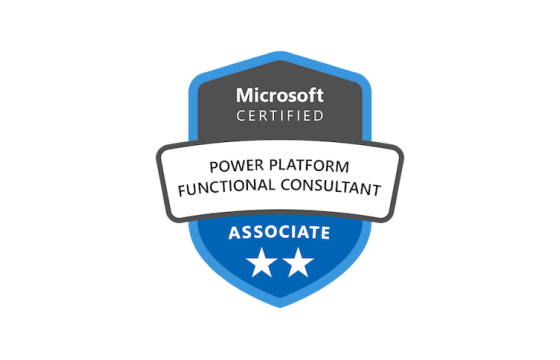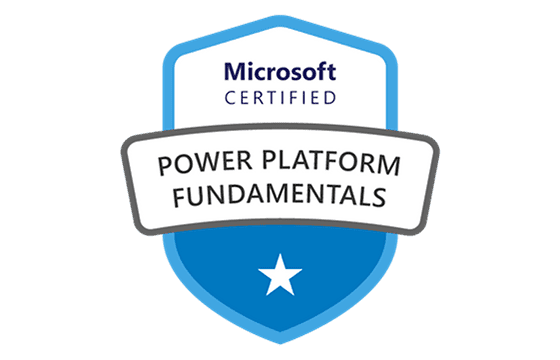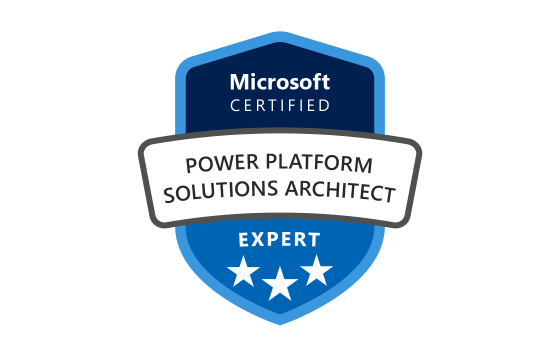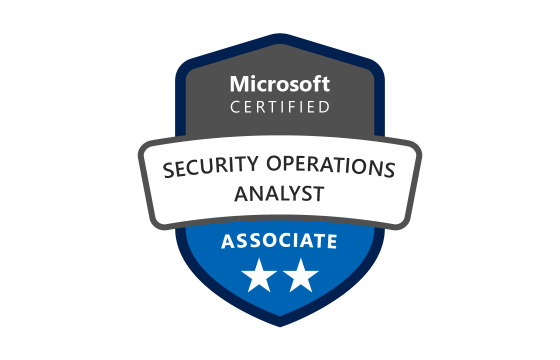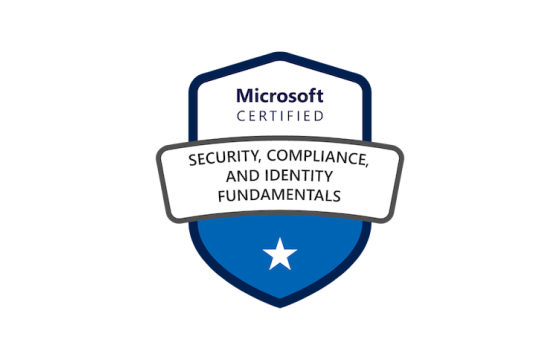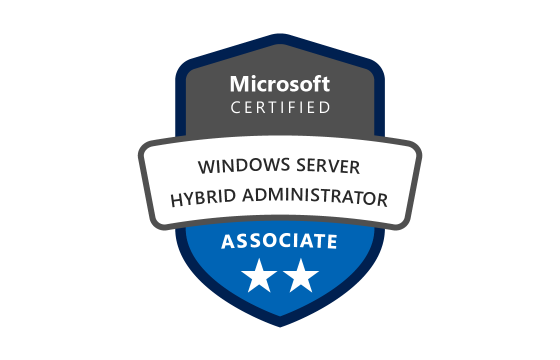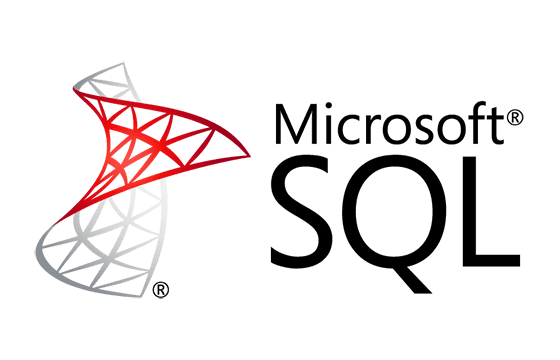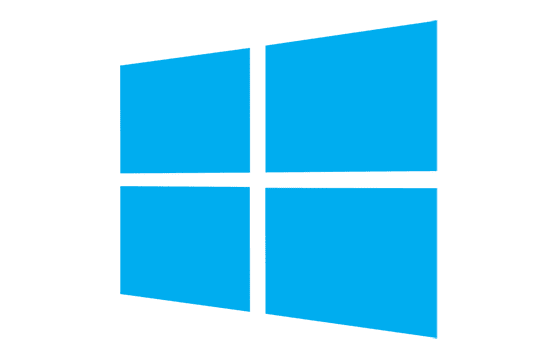Pass Your Microsoft 70-162 Exam Easy!
Microsoft 70-162 Exam Questions & Answers, Accurate & Verified By IT Experts
Instant Download, Free Fast Updates, 99.6% Pass Rate
Microsoft 70-162 Practice Test Questions in VCE Format
| File | Votes | Size | Date |
|---|---|---|---|
File Microsoft.Hero_Styler.70-162.v2012-05-09.by.Hero_Styler.55q.vce |
Votes 1 |
Size 539.15 KB |
Date May 13, 2012 |
File Microsoft.BrainDump.70-162.v2011-12-30.by.edgarreyes.55q.vce |
Votes 1 |
Size 347.66 KB |
Date Jan 06, 2012 |
Microsoft 70-162 Practice Test Questions, Exam Dumps
Microsoft 70-162 (TS: Forefront Protection for Endpoints and Applications, Configuring) exam dumps vce, practice test questions, study guide & video training course to study and pass quickly and easily. Microsoft 70-162 TS: Forefront Protection for Endpoints and Applications, Configuring exam dumps & practice test questions and answers. You need avanset vce exam simulator in order to study the Microsoft 70-162 certification exam dumps & Microsoft 70-162 practice test questions in vce format.
Kickstart Your IT Career with a Microsoft 70-162 Certification
Embarking on the path to your first Microsoft certification is a transformative step for anyone seeking to validate their technical skills and advance in the technology-driven world. The certification process not only strengthens your understanding of Microsoft’s tools and systems but also positions you as a knowledgeable professional capable of managing complex digital environments. The code 70-162, associated with Microsoft’s configuration and deployment of network infrastructures, represents a significant milestone for learners who are ready to showcase their proficiency in real-world IT scenarios. Preparing for this certification requires a balance of dedication, structured study, and practical application of concepts, which together form the foundation for success in this journey.
For newcomers stepping into the world of certifications, the process can initially seem overwhelming. The wide variety of Microsoft certifications available may create confusion about where to start, but understanding your professional goals helps narrow the path. Code 70-162 targets individuals interested in systems configuration, network management, and advanced deployment techniques that are relevant across multiple business and enterprise settings. This makes it a valuable certification for IT professionals seeking to expand their technical credibility while also learning how to apply Microsoft technologies strategically in real-world environments.
Getting Ready for Your First Microsoft Certification (Code 70-162)
The Microsoft certification process is not just about passing an exam. It’s about developing a structured approach to learning that enhances your long-term technical foundation. This involves learning how Microsoft’s ecosystem functions together, how different technologies integrate, and how each component contributes to larger business processes. The 70-162 certification helps you grasp these interconnections through rigorous learning modules and practical exercises, ensuring that you can implement theoretical knowledge into actionable solutions. Microsoft certifications like this one require the candidate to balance conceptual understanding with applied learning, focusing equally on the “why” and the “how” of technology operations.
As you begin your preparation, it’s essential to define your motivation. Are you aiming to validate your technical abilities, boost your career prospects, or transition into a new domain within IT? Understanding your intent helps guide your study strategy and keeps you motivated throughout the process. Microsoft certifications are structured to cater to both beginners and experienced professionals, allowing you to progress through different tiers of expertise. The 70-162 certification, in particular, serves as a gateway to more advanced levels of Microsoft specialization, establishing a strong technical base that can later be expanded into cloud computing, infrastructure management, and security administration.
Once you’ve determined your certification goal, your next step is to explore Microsoft’s learning framework. The beauty of Microsoft’s ecosystem lies in its comprehensive learning structure, which combines official documentation, learning paths, and hands-on labs to ensure well-rounded preparation. For code 70-162, learners are expected to engage deeply with materials related to Windows network configuration, deployment management, and troubleshooting methods. Each learning path introduces practical concepts gradually, enabling you to build confidence as you progress through each module. Rather than rushing through the topics, spending time understanding each concept in depth helps develop the critical thinking skills necessary for applying your knowledge effectively in workplace scenarios.
Many candidates underestimate the power of consistency in preparation. Creating a steady routine for study ensures that you retain information more effectively and avoid burnout before the exam. Divide your preparation time into manageable sections, focusing each session on specific areas such as networking fundamentals, deployment protocols, or security policies. While the code 70-162 exam measures your technical expertise, it also evaluates your analytical reasoning and problem-solving skills. This means rote memorization won’t help much unless it’s backed by a solid understanding of how and why certain configurations work the way they do.
One effective way to solidify your understanding is by using virtual labs or simulation tools. Microsoft’s training environment often includes sandbox spaces that mimic real-world systems, allowing learners to apply configurations, deploy updates, and troubleshoot common issues. Through these exercises, you not only prepare for the exam but also gain practical experience applicable to actual IT roles. Such hands-on practice makes a noticeable difference in performance, both in the test and in professional environments where quick and accurate decisions are necessary.
As you dive deeper into the certification process, it becomes clear that Microsoft’s exams are designed to reflect the evolving nature of technology. The 70-162 certification, though rooted in specific technical areas, encourages candidates to think about adaptability and continuous learning. Technology changes rapidly, and maintaining relevancy requires a willingness to learn beyond what is required for the exam. Microsoft’s certification structure aligns perfectly with this philosophy by encouraging candidates to engage with updated materials, community discussions, and evolving technologies. Staying informed about new updates ensures your skills remain aligned with industry standards long after the certification is achieved.
A common misconception about certifications is that they are purely academic. However, Microsoft certifications are highly practical in their application. The knowledge gained while preparing for code 70-162 equips you to perform real tasks such as setting up complex networks, managing deployment systems, and securing digital infrastructures. This certification becomes a bridge between theoretical learning and professional implementation. It enhances your ability to communicate effectively with peers and supervisors about technical challenges while also demonstrating your readiness to take on more complex responsibilities within your organization.
Confidence plays an equally crucial role in your certification journey. Many candidates possess the required technical knowledge but fail to perform under exam conditions due to a lack of confidence. The best way to overcome this is through practice assessments, mock tests, and regular self-evaluation. Each mock test you attempt builds your familiarity with the exam format, helping you manage time effectively during the actual test. Additionally, reviewing your results after each practice session highlights the areas that need improvement, allowing you to adjust your study approach accordingly. Remember that confidence is built through preparation, and the more familiar you become with the exam environment, the stronger your performance will be on the day of the test.
Another important factor to consider is the value of peer learning. Joining study groups or online learning communities can significantly enhance your understanding of complex topics. Discussing problems with others exposes you to different perspectives and problem-solving methods that you might not encounter on your own. It’s also a great way to stay motivated when preparation feels challenging. Many learners who have successfully achieved their certification emphasize the importance of networking with like-minded individuals during the study phase. The shared experience of preparing for the same goal creates a collaborative environment where everyone benefits from each other’s knowledge.
Once you have built a steady preparation rhythm, it’s time to focus on exam readiness. Understanding the format, question types, and scoring criteria of the 70-162 exam will help you manage expectations and reduce anxiety. Typically, Microsoft exams feature a combination of multiple-choice questions, case studies, and performance-based tasks that test your ability to apply concepts in real-world situations. Familiarizing yourself with these question styles ensures you can allocate time wisely and maintain focus throughout the test. Maintaining calmness during the exam is just as important as knowing the answers, so practicing mindfulness and time management can be surprisingly effective strategies.
After passing your first Microsoft certification exam, the journey doesn’t end. In fact, it marks the beginning of continuous growth and skill refinement. Microsoft certifications require periodic renewals to ensure your knowledge remains relevant in a constantly evolving industry. Engaging in renewal assessments or pursuing advanced certifications helps you stay competitive and updated on new technologies. The 70-162 certification opens doors to numerous specialized paths, allowing you to dive deeper into areas like enterprise configuration, network optimization, or security architecture.
In essence, earning your first Microsoft certification is more than just an academic achievement—it’s a demonstration of perseverance, adaptability, and technical capability. The process teaches you how to approach learning methodically, how to apply knowledge practically, and how to maintain discipline in the face of complex challenges. These traits not only contribute to professional success but also cultivate a mindset geared toward lifelong learning. The discipline and resilience developed during this preparation often extend beyond the exam, influencing the way you approach new technologies and professional responsibilities.
Whether you are a student aspiring to break into IT, a professional looking to validate existing skills, or someone aiming to shift careers, Microsoft certification code 70-162 offers a structured, rewarding path toward achieving those goals. It empowers individuals to bridge knowledge gaps, enhance employability, and contribute more effectively to organizational growth. Each lesson learned throughout this journey becomes part of a greater foundation that supports future advancements in technology and personal achievement.
The road to your first certification is a journey of self-discovery as much as it is one of skill acquisition. You’ll learn not only about systems and configurations but also about your ability to persevere, adapt, and grow through structured learning. With consistent effort, the right study approach, and an understanding of your goals, the Microsoft certification process transforms from a challenge into an opportunity. By achieving the 70-162 certification, you prove that you are not just keeping pace with technology—you are ready to shape its future.
Building a Strong Foundation for Microsoft Certification Success (Code 70-162)
The journey toward earning your first Microsoft certification, particularly code 70-162, is not just an academic pursuit—it’s a deliberate process of building technical excellence and intellectual endurance. Every professional seeking to thrive in the digital era must learn how to connect theoretical knowledge with practical execution. The 70-162 certification focuses on configuration, deployment, and management within Microsoft systems, allowing individuals to understand how technologies integrate into an organization’s operational fabric. Developing this foundation requires not only familiarity with Microsoft technologies but also a deep appreciation for problem-solving and analytical thinking.
For many, the first phase of preparation can feel overwhelming. The vast amount of content available for Microsoft certifications often leaves candidates unsure of where to begin. The key to overcoming this confusion is structure. Success in the certification process is born from a well-planned strategy that aligns with your learning style and professional objectives. Understanding how to absorb information effectively, apply it logically, and recall it efficiently under exam conditions makes the difference between a confident candidate and one who struggles to connect concepts during assessment. The foundation you build during this stage determines how smoothly the rest of your preparation unfolds.
It’s essential to begin your preparation by developing a clear understanding of Microsoft’s learning ecosystem. Microsoft certifications are intentionally designed to reflect industry needs, meaning every module connects directly to practical applications. The 70-162 certification, for example, deals with the deployment and configuration of Microsoft technologies used in real-world enterprise settings. By studying these systems in depth, you begin to see how Microsoft’s tools empower businesses to streamline operations, enhance productivity, and maintain secure networks. A structured learning plan ensures that you grasp not just the technical elements but also the purpose and impact behind each tool and configuration method.
When constructing your foundation, self-discipline is your greatest ally. Many learners underestimate how much time and focus are required to absorb advanced technical content. Establishing a study schedule helps ensure consistency, which is critical for long-term retention. Short, focused study sessions yield better results than sporadic, lengthy ones. Setting achievable goals, such as completing one module or learning path each week, gives you measurable progress and boosts motivation. Moreover, taking notes during study sessions reinforces comprehension and provides a valuable review resource closer to exam time.
An often-overlooked aspect of preparation is cultivating the right mindset. Microsoft certifications require more than memorization—they demand analytical reasoning and adaptability. The exam for code 70-162 measures your ability to interpret scenarios, diagnose issues, and select optimal solutions. This means that each question is an opportunity to demonstrate applied understanding rather than theoretical recall. To prepare effectively, you must learn how to approach technical problems strategically. Practice analyzing configuration challenges, troubleshooting common issues, and evaluating possible solutions using your existing knowledge. This trains your mind to respond logically under time pressure.
In addition to self-paced study, it’s wise to supplement your learning with external resources. Instructor-led training, for instance, provides an opportunity to interact directly with Microsoft Certified Trainers who bring real-world experience to theoretical concepts. These sessions can clarify complex topics and provide context that’s difficult to gain through self-study alone. Many trainers share practical insights from their careers, helping you connect exam content to real industry practices. Similarly, learning rooms or community forums allow you to discuss topics with peers, exchange ideas, and collaborate on problem-solving. The collective wisdom of such groups often exposes you to techniques or perspectives that enhance your understanding.
A crucial part of developing your foundation is mastering Microsoft’s learning platform itself. The Microsoft Learn portal offers structured learning paths that align with the 70-162 exam objectives. Each path combines textual explanations, videos, and sandbox exercises that replicate real scenarios. This hands-on component allows you to experiment with configurations safely, observe outcomes, and refine your understanding through practice. By engaging actively with these exercises, you move from passive learning to applied comprehension—a vital transition for mastering technical skills.
Another effective approach is integrating your study with real-world practice. If you’re currently employed in an IT-related role, apply your learning directly to your job environment. Experimenting with deployment configurations or network setups reinforces your understanding and creates memorable learning experiences. Even if your current role doesn’t directly involve Microsoft systems, you can simulate scenarios using virtual machines or cloud-based environments. This practical exposure helps internalize the cause-and-effect relationships between different system configurations and network behaviors.
Time management plays a central role in maintaining your study momentum. Since Microsoft certifications demand both breadth and depth of knowledge, candidates often feel pressured by the scope of material to cover. Dividing your preparation into stages prevents burnout and ensures balanced coverage. Begin with foundational topics such as networking basics and gradually move toward advanced areas like deployment automation and system optimization. This gradual progression mirrors Microsoft’s learning philosophy—start simple, build context, then master complexity. Each small success reinforces your confidence and creates a sense of readiness as exam day approaches.
Self-assessment is another indispensable part of building a strong foundation. Practice tests, mock exams, and review quizzes not only evaluate your knowledge but also help identify weak areas early in the process. Treat each incorrect answer as an opportunity to refine your understanding. The goal isn’t merely to score higher but to uncover gaps in comprehension. Reviewing your performance after each test enables you to adjust your study plan dynamically. Over time, you’ll notice patterns—certain topics that require more focus or areas where your conceptual understanding remains shallow. Addressing these early ensures you enter the exam fully prepared.
While technical preparation forms the core of your journey, mental and physical well-being should not be neglected. Continuous study without rest leads to fatigue, reducing your ability to retain and process information effectively. Incorporating breaks, maintaining a balanced diet, and ensuring adequate sleep are essential to sustaining focus. Mental clarity and calmness are especially important on exam day, where composure often makes the difference between success and failure. Cultivating mindfulness or relaxation techniques can help manage pre-exam anxiety, allowing you to approach the test with confidence and mental alertness.
Beyond the immediate goal of certification, the knowledge you gain from this process contributes to your broader professional identity. Microsoft certifications, especially code 70-162, hold global recognition and demonstrate a high standard of technical competence. Achieving such a credential signals to employers and peers that you possess not only technical acumen but also the discipline and determination to complete a rigorous professional journey. This recognition opens pathways to advanced certifications and specialized career roles that further solidify your expertise.
It’s also worth understanding how the principles you learn through this certification extend into evolving technologies. Microsoft’s ecosystem continually adapts to accommodate innovations in cloud computing, AI integration, and cybersecurity. By mastering foundational configuration and deployment skills, you’re preparing yourself for adaptability in these emerging fields. The habits developed—structured learning, analytical thinking, and continuous improvement—remain relevant across any technological domain you choose to pursue in the future.
An effective way to maintain motivation during preparation is to visualize your long-term goals. Picture the opportunities that certification will unlock, such as improved job prospects, higher salaries, or the ability to lead projects that impact organizational growth. This perspective keeps your study process purposeful and transforms each challenge into a stepping stone. Every hour spent studying contributes not only to passing an exam but also to redefining your professional trajectory. The more emotionally invested you become in your learning, the easier it is to maintain consistency and overcome obstacles.
As your foundation solidifies, you’ll notice a shift in how you approach technology in general. You’ll begin to think beyond tools and commands, focusing instead on architecture, scalability, and efficiency. This intellectual growth represents the true value of certification. The 70-162 exam may test technical knowledge, but its deeper purpose is to cultivate professionals who can think critically about technology’s role in solving real problems. With every concept mastered, you’re not just preparing for an exam—you’re shaping your ability to contribute meaningfully to future innovations.
Building a strong foundation for Microsoft certification success is an investment in both skill and character. The discipline required to prepare for code 70-162 transforms you into a learner who values precision, adaptability, and persistence. These qualities extend far beyond the exam, influencing your work ethic and approach to lifelong learning. By the time you complete your preparation, you’ll have gained not only technical expertise but also the mindset of a true professional—someone capable of navigating the complexities of an ever-changing technological landscape with confidence and purpose.
Mastering the Microsoft Certification Journey and the Core Understanding of Code 70-162
Earning your first Microsoft certification is more than simply passing an exam—it’s about understanding the language of technology, mastering logical processes, and cultivating the mindset of a problem solver. The code 70-162 certification represents one of the most comprehensive routes into this world, challenging you to think systematically and apply your knowledge across practical scenarios. As you transition from initial preparation to deeper learning, the process evolves from memorization to mastery, from curiosity to capability. This stage is where you begin to internalize concepts, connect technologies, and think strategically about how systems operate together within the Microsoft ecosystem.
The certification journey demands intellectual stamina. It is a long-term investment that tests not just what you know but how effectively you can adapt, reason, and troubleshoot under time constraints. The purpose of certification exams like 70-162 isn’t simply to measure rote learning—it’s to ensure that you can function competently in real-world environments where systems are complex, layered, and interdependent. This requires not just studying textbooks but developing the ability to see relationships between components—how network configurations affect deployment, how cloud integration modifies security policies, and how administrative tools influence productivity. When you begin viewing your learning through this systems-oriented lens, you move from being a learner to becoming a true practitioner.
A major component of mastering this stage involves refining your approach to knowledge retention. Many candidates make the mistake of trying to cram information instead of organizing it conceptually. The best strategy is to categorize your learning according to functionality—understanding what a feature does, why it exists, and how it interacts with other tools. For example, within the scope of the 70-162 exam, you might analyze deployment procedures and ask how automation scripts differ from manual setup methods or how specific configuration policies influence user accessibility. When you connect concepts in this way, you create cognitive frameworks that make recall natural and effortless.
Another essential principle in this stage is repetition through active application. Reading materials once isn’t enough to engrain understanding—you must practice. Microsoft’s learning approach emphasizes experiential learning, where knowledge is reinforced through hands-on labs and real-world simulations. By building and testing configurations yourself, you discover nuances that books often overlook. A simple configuration change can alter an entire system’s behavior, and recognizing these subtleties gives you an edge during the exam and in your professional work. Setting up virtual environments at home or through cloud-based labs allows you to test theories, explore configurations, and make mistakes safely—transforming errors into insights.
One of the more advanced techniques for mastering exam content is scenario-based learning. The code 70-162 exam doesn’t just present isolated questions; it frames challenges within realistic operational contexts. For example, you may be asked to configure a deployment strategy for a hybrid network or troubleshoot an application performance issue within a defined infrastructure. These scenarios require comprehensive reasoning rather than isolated knowledge. To prepare, challenge yourself by creating hypothetical problems and solving them using multiple approaches. This method not only deepens your understanding but also builds flexibility in your problem-solving process—an essential skill in dynamic IT environments.
As you progress, you’ll realize that technical expertise is only part of what Microsoft certifications represent. The 70-162 certification also measures your ability to interpret documentation, analyze data, and make informed decisions based on incomplete information. This is a crucial distinction—real-world technical work rarely provides perfect clarity. You’ll often face ambiguous circumstances where you must rely on logical deduction and experience. The exam reflects this reality by testing comprehension through layered questions that blend theory with practical judgment. The more you train yourself to read between the lines and infer outcomes from context, the stronger your performance will become.
Effective study routines also play a significant role during this phase. Once your foundation is built, consistency becomes your most powerful tool. Establishing a rhythm—daily reviews, periodic self-assessments, and continuous hands-on application—ensures that your understanding matures over time. Breaking your study sessions into focused intervals keeps your brain engaged without fatigue. Alternating between different types of learning materials—videos, articles, practice exams, and live demos—stimulates multiple areas of cognition, improving retention and comprehension. Over time, your grasp of technical principles becomes intuitive, and your ability to recall information under exam pressure sharpens naturally.
To truly master the 70-162 certification content, you must also learn to interpret the logic behind Microsoft’s system designs. Every configuration option, every parameter, every policy exists for a reason. Microsoft technologies are designed around integration and scalability. Understanding why a setting is implemented helps you predict how it will behave in new contexts. This predictive capability is what separates novice learners from experts. Instead of memorizing steps, you begin to visualize outcomes before executing them. This skill not only benefits your exam preparation but also lays the groundwork for advanced roles in system administration, cloud architecture, or network engineering.
Equally vital to your success is the cultivation of analytical discipline. Complex certification topics require patience and iterative learning. You may encounter concepts that seem abstract or difficult to internalize at first—security policies, automation scripting, virtualization management—but each revisit strengthens your familiarity. By layering your knowledge gradually, you achieve deeper comprehension and long-term retention. This disciplined learning mirrors the structure of Microsoft’s technological ecosystem itself—built layer by layer, with each element supporting the next. Embracing this incremental approach keeps you grounded and prevents frustration when progress feels slow.
At this point, it’s valuable to start measuring your readiness objectively. Taking practice tests aligned with the 70-162 exam structure provides critical feedback on your strengths and weaknesses. More importantly, it accustoms you to the pacing, question phrasing, and situational logic of the real exam. Treat these assessments not as predictors of success but as diagnostic tools. Focus on understanding why certain answers are correct rather than memorizing them. Each explanation enhances your conceptual depth and prepares you to handle unfamiliar variations of similar questions in the actual test.
An underrated but powerful aspect of exam readiness is collaboration. Engage with others preparing for the same certification. Study groups create accountability and broaden your exposure to different learning techniques. When you explain a concept to someone else, you reinforce your own understanding and identify any gaps in your reasoning. Collaborative learning fosters intellectual resilience—it reminds you that learning is not a solitary struggle but a shared pursuit. Discussions about troubleshooting strategies or deployment methods can open your eyes to alternative solutions that you might never have considered on your own.
The psychological dimension of certification preparation should not be underestimated. As you get closer to the exam, anxiety and self-doubt can creep in. The pressure to perform well after investing so much time can distort focus and undermine confidence. Managing this requires deliberate mental conditioning. Visualization exercises, deep breathing, and structured relaxation periods can all help regulate stress levels. Remember that the purpose of the exam is not to intimidate but to verify your capability. Confidence is built through competence—every hour of preparation adds to your ability to navigate even the most complex scenarios calmly and efficiently.
It’s also beneficial to align your preparation with long-term professional goals. While your immediate aim is to pass the exam, think about where this certification fits into your broader career trajectory. The code 70-162 certification, like most Microsoft credentials, is a stepping stone toward specialized expertise. Whether your goal is cloud architecture, data analytics, or cybersecurity, this certification forms the baseline from which you can branch into advanced domains. Understanding this context helps sustain motivation during challenging study phases—it transforms each topic from a temporary hurdle into a lasting asset.
During the final stages of preparation, simulate the test environment as closely as possible. Time your practice sessions, eliminate distractions, and challenge yourself to think under pressure. Familiarizing yourself with the rhythm of the exam ensures that anxiety doesn’t disrupt your performance. Learn how to manage time efficiently—allocate minutes per question, flag difficult ones, and return later. This structured approach prevents panic and ensures that you maximize your performance across the entire duration of the test.
As you refine your skills, remember that the pursuit of certification is not a race but a transformation. You’re not just studying to pass; you’re evolving into a professional capable of understanding systems holistically. Each concept you master enhances your ability to design, maintain, and troubleshoot complex infrastructures. The effort invested today becomes the foundation for tomorrow’s expertise. The 70-162 certification signifies not just knowledge but readiness—a declaration that you’re equipped to handle technological challenges with competence and creativity.
By the time you approach your exam date, you should feel not only technically prepared but intellectually transformed. You’ll have developed habits of precision, patience, and perseverance that extend far beyond the certification process. The mastery gained through this journey builds confidence that resonates throughout your career. With each concept internalized and each challenge overcome, you become not just a certified professional but a more insightful, analytical, and capable technologist.
Advancing Toward Technical Mastery Through Microsoft Certification Code 70-162
Moving deeper into the Microsoft certification journey marks a transition from structured learning into analytical independence. Once you have developed a foundational understanding of Microsoft technologies, the next step is to transform that knowledge into real technical mastery. The 70-162 certification, which focuses on advanced deployment and configuration principles, challenges you to go beyond following instructions and begin interpreting systems intuitively. This stage is where learning becomes personal, reflective, and connected to practical insight. Every concept learned must evolve into an actionable skill that can be used to design, optimize, and troubleshoot complex digital environments.
At this point, your approach must become more investigative. You no longer rely solely on external materials but begin to analyze the underlying logic of Microsoft infrastructures. When you configure networks, automate deployments, or secure data pathways, you should question not just how the process works but why it works. This reflective practice nurtures a deeper level of understanding and prepares you for the critical reasoning required by the 70-162 exam. Instead of memorizing scripts, you start recognizing systemic patterns—how resource allocation affects performance, how network topologies influence access controls, and how updates interact with legacy configurations. This mindset aligns perfectly with Microsoft’s engineering philosophy, where adaptability and comprehension are more valuable than rigid technical recall.
The most effective learners in this phase embrace experimentation. Establishing a controlled environment where you can test configurations, simulate issues, and validate solutions is essential. By working in virtualized labs, you can safely explore advanced concepts like system optimization, policy enforcement, and automation without risking production systems. Every adjustment and error you make teaches you something unique about the behavior of Microsoft frameworks. When you deploy a configuration and something fails, the process of diagnosing and resolving the problem provides real experiential knowledge—far more valuable than reading theoretical documentation alone.
The learning rhythm becomes more intense during this stage. You’re no longer just studying topics in isolation; instead, you begin integrating knowledge across domains. You might find yourself connecting cloud management principles to networking configurations or understanding how automation scripts can streamline server maintenance. This integrated learning mirrors how modern organizations operate—multiple systems, each interdependent, functioning seamlessly within a single ecosystem. The 70-162 certification expects you to demonstrate this cross-functional awareness. It’s not about isolated skill sets but about understanding how to make technologies cooperate for business efficiency.
As your comprehension deepens, it’s critical to develop fluency in troubleshooting methodology. Problem-solving within Microsoft systems requires logical sequencing, deductive reasoning, and systematic verification. The exam will often test this indirectly through scenario-based questions where you must identify the most effective solution among several plausible options. To prepare, practice creating troubleshooting paths for real or hypothetical problems. For example, when a deployment fails, instead of guessing the cause, structure your investigation—verify network connectivity, review configuration logs, analyze permissions, and isolate dependencies. This analytical rigor not only enhances exam performance but also mirrors the approach used by top-tier professionals in real IT operations.
The ability to read and interpret system documentation becomes another essential skill at this stage. Microsoft’s technical references are comprehensive but dense, and learning how to extract key information quickly can dramatically improve both study efficiency and on-the-job performance. When reviewing documentation, focus on cause-and-effect relationships—what triggers a function, what parameters influence its behavior, and what dependencies exist between components. Building this interpretative skill ensures that when you face new technologies or system updates in the future, you can adapt independently without extensive retraining.
Engaging with simulation-based exercises also accelerates mastery. Many platforms offer realistic test environments that replicate the kind of challenges found in the 70-162 exam. These simulations allow you to apply theoretical knowledge under timed conditions, training both technical precision and mental agility. Each simulation strengthens your decision-making process—how to prioritize actions, manage system resources, and maintain stability during rapid configuration changes. By repeatedly working through simulated tasks, you create neural familiarity with real operational workflows, transforming exam questions from intimidating puzzles into familiar patterns.
Beyond technical proficiency, mastering this certification requires strategic planning. You should now have a clear roadmap detailing how each study session contributes to your overall readiness. Break your plan into defined segments—configuration management, security implementation, automation, and performance optimization—and set timelines for completion. This disciplined approach keeps your learning balanced and ensures that no essential domain is neglected. Tracking progress visually, perhaps through a chart or checklist, helps maintain motivation and accountability throughout this intensive period.
In this phase, cognitive endurance becomes as important as intellectual understanding. Studying advanced material for extended periods demands mental flexibility and concentration. To sustain productivity, incorporate deliberate rest intervals into your schedule. Short breaks between study sessions refresh cognitive capacity, preventing burnout and maintaining sharp focus. Additionally, alternating between theoretical reading and practical application keeps learning dynamic and engaging. Each time you switch from a manual to a lab exercise, your brain processes information through different cognitive channels, reinforcing retention and comprehension.
You will also find immense value in revisiting core concepts periodically. As your understanding matures, reviewing foundational topics reveals new layers of meaning. Concepts that once seemed simple—like network addressing, access control lists, or virtualization principles—become more nuanced as you see how they integrate into larger architectures. This cyclical learning reinforces your command of Microsoft’s frameworks and ensures that your knowledge remains cohesive across multiple layers of technical complexity.
During this phase, confidence must be cultivated deliberately. Confidence is not arrogance; it’s the quiet assurance that comes from preparation and competence. To build it, maintain a record of your progress—each completed module, each resolved challenge, each successful simulation. Reviewing this record before the exam reminds you of how far you’ve come, reinforcing a sense of readiness. Confidence also allows you to approach complex problems without hesitation. When faced with unfamiliar questions, you’ll be able to reason through them logically instead of panicking.
Another valuable habit is reflecting on mistakes with objectivity. Failure during practice is not a setback—it’s a diagnostic tool. Every incorrect answer or misconfigured system exposes a gap in your understanding. Instead of frustration, treat these errors as opportunities for precision. Analyze why the mistake occurred, what assumption led to it, and how you can avoid repeating it. This method of error-based refinement accelerates learning and strengthens your analytical judgment, preparing you for the unpredictable challenges of both exams and professional practice.
At this point, the connection between theory and application becomes deeply personal. You start to develop an instinct for technology—a sense of what will work, what might fail, and why. This intuition comes from the accumulation of both deliberate study and experiential learning. When you reach this level of familiarity, your confidence expands beyond the exam; you begin to feel equipped to manage, design, and optimize systems in real-world scenarios. The 70-162 certification thus becomes more than a credential—it becomes a reflection of your evolution as a technology professional capable of shaping solutions rather than merely applying them.
To enhance your adaptability, expose yourself to multiple problem contexts. Experiment with different configurations, simulate network failures, and test recovery procedures. Each experiment sharpens your response patterns, teaching you to act decisively even under pressure. In real-world operations, unexpected issues arise constantly—hardware faults, configuration mismatches, software conflicts. Your ability to remain composed and methodical in these moments is what defines professional maturity. The 70-162 certification emphasizes this readiness, validating your capacity to perform in complex, high-stakes environments.
As your preparation nears completion, shift focus from content accumulation to synthesis. Begin connecting disparate concepts into unified frameworks. For instance, recognize how automation scripts influence system security or how network optimization relates to resource allocation. Seeing these interdependencies mirrors how enterprise systems operate in real life. The more connections you draw, the more intuitive your decision-making becomes during both the exam and your professional projects.
At the heart of this journey lies transformation. What began as structured learning now becomes a natural language—a fluent understanding of how Microsoft systems function and evolve. You’ll find that this mastery extends beyond the boundaries of a single certification. The analytical frameworks, study habits, and technical intuition you develop here will serve as permanent assets, applicable across future certifications, projects, and technological shifts. The goal is not merely to pass the 70-162 exam but to emerge as a professional capable of continuous growth in an ever-changing industry.
By the time you complete this stage, you’ll possess not only the technical skillset expected of a certified professional but also the mindset of a lifelong learner—curious, adaptable, and resilient. The process itself becomes your teacher, shaping how you think, learn, and solve problems. And as you progress toward the final phases of preparation, you’ll realize that every concept, every simulation, and every challenge faced along the way was preparing you not just for an exam, but for a career built on mastery, innovation, and confidence.
Building Confidence and Technical Maturity Through Microsoft Certification Code 70-162
Confidence and technical maturity form the bridge between preparation and achievement in the journey toward Microsoft certification. Once you have accumulated theoretical understanding and hands-on experience, you begin to transition from a learner into a professional who can make informed decisions independently. This evolution is central to the 70-162 certification, which evaluates not just what you know but how effectively you apply that knowledge under dynamic and realistic scenarios. To succeed at this level, you must blend confidence, discipline, and adaptability, developing a balance between deep technical awareness and calm strategic thinking.
Confidence is not developed overnight. It begins when you start believing in the quality of your preparation. Every study session, lab exercise, and simulation contributes to building that internal assurance. The 70-162 exam demands competence in real-world application of Microsoft tools and frameworks, meaning you cannot rely solely on memorization. True confidence comes from repeated engagement with challenges, persistent troubleshooting, and learning from mistakes. Each successful configuration, every corrected error, and each moment of clarity during complex tasks adds another layer of certainty. This sense of readiness becomes a stabilizing force during the exam, helping you think clearly even under time pressure.
As you refine your preparation, begin to approach study with an engineer’s mindset rather than a student’s mindset. Instead of simply consuming information, start constructing your own understanding of how Microsoft systems operate. Think of each topic—network configuration, deployment automation, security implementation—as interconnected components of a larger structure. The more you perceive these relationships, the more effectively you can troubleshoot, design, and optimize environments. This interconnected thinking mirrors the mindset of certified professionals who are expected to handle complex systems with precision and foresight.
Practical learning remains the cornerstone of your progress. Working within a controlled test environment allows you to deepen your understanding without fear of irreversible mistakes. Virtual labs are invaluable tools here. They provide the space to test policies, automate scripts, analyze deployment logs, and refine performance configurations. The aim is to internalize system behavior—how each command affects network stability, how permissions interact across hierarchies, and how updates influence dependencies. Through such experimentation, you transform abstract knowledge into instinctive capability. Confidence becomes less about hope and more about experience, anchored in a clear understanding of outcomes.
Technical maturity also involves learning to anticipate challenges before they occur. Professionals distinguished by certification are not reactive; they are proactive. They identify potential risks, evaluate consequences, and plan preventive measures. As you study for 70-162, begin incorporating this anticipatory perspective. When reviewing case studies or configurations, ask yourself what could fail, how it might fail, and what would prevent it. This predictive reasoning builds analytical resilience, enabling you to handle unforeseen complications with composure. It also sharpens your problem-solving ability—an essential skill tested directly in performance-based exam scenarios.
Your approach to troubleshooting should now reflect systematic precision. When faced with an issue, avoid impulsive trial and error. Instead, build a stepwise method—define the problem, gather evidence, isolate variables, implement targeted changes, and verify outcomes. This disciplined approach mirrors the diagnostic frameworks used by experienced engineers. Developing this structure during preparation not only enhances your effectiveness in lab environments but also solidifies logical reasoning under exam conditions. Consistency of method becomes your greatest ally, ensuring that even complex scenarios can be deconstructed into manageable steps.
Effective time management becomes increasingly critical at this point. The 70-162 exam assesses both technical accuracy and efficiency. A technically correct solution delivered too slowly may not earn full credit, reflecting the realities of operational environments where timely responses are crucial. To train for this, practice working under timed conditions. Set limits for completing configuration exercises or simulation tests. As you progress, you’ll learn to balance speed with accuracy, identifying shortcuts that do not compromise precision. The goal is to develop an instinctive rhythm—fast enough to meet constraints, deliberate enough to avoid mistakes.
Another dimension of technical maturity involves cultivating adaptability. Microsoft technologies evolve rapidly, and what you master today might shift tomorrow through system updates or policy revisions. The certification process prepares you for this reality by emphasizing conceptual understanding over static memorization. Rather than focusing solely on commands or interfaces, focus on principles—how processes interact, what governs resource behavior, and why configurations respond the way they do. Once you understand these fundamentals, adapting to future versions or related technologies becomes natural. Adaptability transforms your certification from a temporary achievement into a foundation for continuous professional growth.
Equally important is maintaining mental resilience. Advanced certifications like the 70-162 test not only test technical capability but also psychological composure. Exam sessions can induce stress, especially when complex scenarios appear unexpectedly. Resilience allows you to remain calm, assess logically, and proceed strategically. Building this quality requires exposure to stress in controlled ways. Timed mock exams, troubleshooting high-difficulty labs, and problem-solving under simulated pressure all help condition your focus. Over time, you learn to associate challenges not with anxiety but with opportunity. Every demanding scenario becomes a chance to demonstrate control and clarity.
Peer interaction can also accelerate development at this stage. Engaging with study communities, discussion forums, or local certification groups exposes you to diverse problem-solving approaches. You may discover alternative methods, command sequences, or conceptual interpretations that enrich your own understanding. Collaboration builds both technical insight and communicative skill—qualities that differentiate accomplished professionals from isolated learners. However, collaboration should complement, not replace, independent analysis. Always verify external input through your own experimentation to ensure accuracy and internalization.
The 70-162 certification embodies both technical and strategic intelligence. Success requires mastery across layered competencies—from network optimization to security governance, from automation efficiency to performance troubleshooting. Treat each domain as a component of a unified ecosystem. When preparing for one topic, always consider how it influences or depends on others. For instance, modifying a system policy might affect automation workflows, or reconfiguring a deployment might change security behavior. This holistic comprehension aligns your mindset with real-world IT architecture, where interdependencies are constant and critical.
Consistency of study becomes essential as you approach the final stages of preparation. Long gaps between sessions lead to knowledge fragmentation and loss of flow. Design a steady routine that blends review, practice, and reflection. Begin each day with a brief recap of previous material to reinforce memory before adding new layers of understanding. End sessions by summarizing what you learned and what challenges remain unresolved. Over time, this iterative learning rhythm consolidates information into long-term retention, ensuring clarity even under the pressure of examination.
Self-assessment remains a powerful tool for gauging readiness. Periodically simulate exam conditions using practice tests modeled after 70-162 standards. Record your performance, not just in terms of correct answers but also in reasoning speed, confidence levels, and error analysis. Each session becomes feedback data guiding improvement. Identify recurring weak areas and allocate additional focus there. Self-assessment fosters accountability and cultivates professional discipline—the same mindset required for maintaining performance consistency after certification, when real systems depend on your expertise.
Equally valuable is the development of reflective awareness. Take time to analyze how your mindset has evolved throughout the process. Notice how your initial uncertainty has transformed into structured confidence. Recognize how your curiosity has expanded from passing an exam to understanding the philosophy behind Microsoft technologies. Reflection deepens motivation and anchors knowledge emotionally, making it more memorable. This connection between intellect and self-awareness becomes an enduring asset, influencing how you approach all future learning.
As your knowledge solidifies, begin internalizing professional ethics associated with technical responsibility. Certification not only validates skill but also signifies trustworthiness. Microsoft-certified professionals often manage sensitive data, mission-critical infrastructure, and enterprise systems that impact thousands of users. Integrity, confidentiality, and accountability become as crucial as configuration expertise. Cultivating ethical mindfulness ensures that technical decisions are guided by both competence and conscience. This moral awareness enhances your credibility and establishes you as a professional capable of leadership, not just technical execution.
The final stretch of preparation should merge consolidation and calm. Avoid cramming in the days before the exam. Instead, review high-value summaries, revisit key configurations, and mentally visualize troubleshooting processes. Confidence now derives from trust in your preparation. The goal is to enter the exam environment composed and attentive. Approach each question as a scenario to be reasoned through rather than a trap to be feared. Use the structured thinking you’ve practiced—identify objectives, evaluate options, and execute decisively.
Earning the 70-162 certification represents more than academic achievement. It marks the point where technical capability meets professional identity. You have learned not only how to manage Microsoft technologies but how to think within their logic, anticipate their behavior, and lead others through complex implementations. This synthesis of skill and mindset prepares you for advanced certifications and career advancement, transforming you from a participant in technology to a practitioner shaping its direction.
When viewed from this perspective, confidence and technical maturity are not outcomes—they are ongoing processes. Every new system, every emerging challenge, every technological shift becomes another opportunity to refine your craft. The principles learned here—systematic analysis, composure under pressure, commitment to integrity—remain constant even as tools evolve. Through this lens, certification becomes less of a destination and more of a lifelong framework for excellence. The journey through Microsoft certification code 70-162 thus symbolizes not only readiness for professional challenges but also the birth of enduring mastery in the discipline of technology itself.
Mastering Technical Strategy and Applied Expertise Through Microsoft Certification Code 70-162
Mastery is not achieved through mere repetition; it is built upon strategy, reflection, and deliberate practice. As you move deeper into your Microsoft certification journey, particularly with code 70-162, your focus should shift from learning to mastering. This stage defines how effectively you can apply your knowledge to solve complex problems, innovate within systems, and manage real-world challenges with composure. Mastery is what distinguishes a certified professional from an average technician. It is the culmination of persistence, discipline, and an evolving understanding of technology’s dynamic architecture.
The journey toward mastery begins with developing a clear strategic mindset. Every system, service, and framework you study under 70-162 requires a comprehension of its purpose and behavior within the broader Microsoft ecosystem. Strategy means more than knowing commands or configurations; it involves knowing when and why to use them. As you prepare, start questioning the reasoning behind each design decision, configuration, or operational command. This inquisitive approach forces you to connect theoretical knowledge with practical utility. When you start thinking in terms of purpose, efficiency, and impact, you begin to operate at the level of a true expert.
Applied expertise develops when you consistently transition theory into execution. The 70-162 framework encourages practical engagement with environments that mimic real infrastructure scenarios. Spend time constructing virtual labs, replicating deployment processes, configuring policies, and experimenting with troubleshooting. Each exercise reinforces not just understanding but instinct. Over time, your responses to technical challenges become intuitive, and your capacity to anticipate outcomes strengthens. This instinctive awareness defines mastery—it transforms reaction into anticipation and uncertainty into precision.
A crucial part of strategic preparation involves pattern recognition. Systems, regardless of their complexity, follow identifiable behaviors and dependencies. When you can discern these patterns—how processes respond to updates, how services depend on configurations, how errors propagate—you begin to see the underlying logic governing Microsoft environments. Such insight allows you to make informed decisions under pressure. During certification exams and professional applications alike, recognizing patterns enables faster diagnosis, more efficient solutions, and greater confidence in execution. This analytical sharpness is precisely what the 70-162 certification seeks to measure.
Equally significant to mastering Microsoft technologies is understanding the relationship between automation and efficiency. The modern IT landscape thrives on scalability and minimal manual intervention. Learning how automation integrates into configuration management, deployment orchestration, and monitoring is essential. Within the context of 70-162, automation isn’t just a skill—it’s a strategic advantage. By mastering automated workflows, you reduce error probability, optimize performance, and create repeatable solutions. It is this balance between human oversight and machine efficiency that defines the future-ready professional.
No mastery is complete without adaptability. Microsoft technologies evolve through continuous updates and innovation, challenging even experienced professionals to stay current. To remain effective, you must develop an adaptive mindset. Treat each system update not as a disruption but as an opportunity to refine your expertise. Approach new versions, changed interfaces, or altered processes with curiosity rather than hesitation. This openness ensures that your certification continues to represent relevance and competence long after the exam. Adaptability transforms static knowledge into living expertise, continuously aligned with technological advancement.
As your understanding deepens, the next step is synthesis—the ability to integrate diverse skills into cohesive performance. Mastery in 70-162 requires merging conceptual understanding with practical dexterity, aligning network design with security protocols, combining automation with system monitoring, and balancing performance optimization with user requirements. This synthesis creates professional harmony, where each decision reflects both immediate technical needs and long-term strategic goals. In this state, your performance transcends task completion; it becomes purposeful innovation.
To sustain mastery, self-evaluation must become habitual. Continuous improvement relies on awareness of both strengths and weaknesses. Regularly assess your workflow efficiency, accuracy under pressure, and conceptual clarity. Use feedback from peers, mentors, or simulated environments to identify areas that demand refinement. Self-evaluation also involves humility—the willingness to accept that perfection is never permanent. The best professionals remain students, constantly exploring emerging technologies, learning from failures, and updating their methodologies. The 70-162 certification serves as a foundation, but mastery transforms it into a lifelong pursuit of betterment.
Another essential element of expertise involves communication. Technical mastery loses impact if it cannot be communicated effectively. Certified professionals often collaborate within multidisciplinary teams where clarity and precision are as vital as technical prowess. Practice articulating your reasoning when solving problems, explaining processes to non-technical audiences, or documenting configurations for future use. Clear communication not only demonstrates command of the subject but also builds trust among colleagues and clients. It transforms technical knowledge into leadership potential, expanding your influence beyond personal execution to team empowerment.
Strategic mastery also involves cultivating an awareness of system interdependencies. Modern Microsoft ecosystems integrate cloud infrastructure, security frameworks, collaboration platforms, and data management solutions. Each component interacts dynamically with others, and any adjustment in one area can trigger ripples across the entire network. Understanding these interdependencies allows you to predict system behavior, minimize risk, and design resilient architectures. In the 70-162 exam context, such understanding demonstrates not only proficiency but architectural foresight—a quality that elevates professionals into solution designers and strategists.
Ethical responsibility remains inseparable from technical mastery. As systems grow in complexity, so too does their impact on users, organizations, and society. Certified professionals hold the responsibility of maintaining integrity, ensuring data security, and upholding compliance standards. Each decision you make—configuring access controls, deploying updates, managing user permissions—carries ethical weight. Treating technology stewardship as a moral duty ensures that your expertise contributes to reliability, trust, and fairness within the digital landscape. Ethics transform technical mastery into meaningful professionalism.
Mental discipline continues to play a defining role. High-level performance in certification exams and real-world scenarios depends on focus, composure, and endurance. Long sessions of troubleshooting or system analysis test not only knowledge but also patience. Cultivate mindfulness techniques that enhance concentration—structured breaks, deep breathing, or reflective pauses. These small habits build resilience, allowing you to sustain mental clarity even during extended technical challenges. Over time, discipline becomes second nature, empowering you to navigate both complexity and fatigue with calm determination.
Your environment for learning and mastery matters as well. Organize a workspace conducive to concentration and creativity. Equip yourself with reliable tools, stable systems, and resources that promote uninterrupted practice. A structured, distraction-free setup mirrors professional discipline and reinforces your identity as a committed learner. Surround yourself with materials that inspire curiosity—system diagrams, network schematics, or written reflections on previous challenges. A deliberate learning environment reflects your seriousness about mastering 70-162 and internalizing its principles into daily practice.
Real-world application completes the cycle of mastery. Once you have gained theoretical command and lab-based confidence, test your understanding in operational contexts. Volunteer for system administration tasks, contribute to open-source projects, or design mock infrastructures for personal study. Experience remains the most reliable teacher, revealing nuances that cannot be captured in study material. Every hands-on engagement enhances adaptability and creative problem-solving, qualities that differentiate merely certified professionals from genuinely skilled practitioners. Real-world experience solidifies theory into intuition, turning studied methods into spontaneous competence.
Reflection after application deepens understanding. When you finish a project, analyze what worked efficiently and what created obstacles. Identify moments where decisions could have been optimized. Document lessons learned, as this practice strengthens retention and informs future strategies. Reflection is the key to continuous mastery—it transforms experience into knowledge and knowledge into wisdom. Over time, these reflections form a personal repository of insights that guide professional judgment and innovation.
Mastering the principles of Microsoft certification code 70-162 is ultimately an exercise in self-evolution. It refines not only your technical skill but your mindset, patience, and strategic awareness. Each concept mastered reinforces self-reliance and amplifies professional credibility. You begin to see systems as living ecosystems, challenges as opportunities, and technology as an instrument for progress rather than an obstacle to overcome. The journey toward mastery never concludes; it simply transforms as you continue to explore deeper layers of understanding and higher levels of responsibility. The more you learn, the more you recognize that mastery is not about knowing everything—it is about continuously learning with purpose, humility, and vision.
Elevating Professional Growth Through Microsoft Certification Code 70-162
Professional advancement has become a cornerstone of modern success in technology-driven industries, and the pursuit of Microsoft certification, particularly under code 70-162, represents a disciplined path toward both personal and organizational excellence. The process of achieving this level of certification is not simply about passing an exam; it is about expanding perspective, enhancing adaptability, and strengthening one’s professional identity within a continuously evolving digital landscape. Each stage of preparation, from conceptual understanding to practical implementation, contributes to an ecosystem of knowledge that drives innovation and transforms the way professionals engage with technology.
The 70-162 certification is more than a credential; it is a catalyst for transformation. It reshapes the way professionals think, analyze, and interact with systems. The preparation process demands a synthesis of theoretical depth and practical insight. Candidates learn not only how to operate within structured environments but also how to anticipate changes, diagnose challenges, and innovate under pressure. This process builds confidence and sharpens intuition, qualities that define true mastery in the world of Microsoft technologies. The capacity to comprehend the intricate interrelationships between components, applications, and networks is what allows certified individuals to stand apart as architects of functionality and not merely as operators of tools.
Achieving professional growth through 70-162 requires embracing change as a permanent companion. In the rapidly shifting technological landscape, static knowledge quickly becomes obsolete. The ability to continuously absorb, interpret, and apply new information determines not just professional longevity but relevance. The certification journey, therefore, entails adaptability as a core professional virtue. Each update, each system modification, and each configuration nuance becomes an opportunity for growth rather than a disruption. Professionals who learn to view change as an ally rather than an adversary can maneuver through the evolution of Microsoft’s ecosystem with assurance and foresight.
At the heart of this growth lies a disciplined approach to learning. The study of 70-162 cannot be reduced to memorization of commands or processes. It demands active engagement with problem-solving scenarios that mimic real-world complexity. Immersing oneself in simulated networks, experimenting with configurations, and resolving conflicts that arise during virtual deployments serve as practical laboratories for intellectual refinement. This type of immersive practice transforms learning into understanding, enabling the candidate to develop a natural fluency with systems that transcends textbook comprehension. Over time, this fluency becomes instinctive, allowing rapid adaptation in unpredictable professional situations.
Equally significant in the journey of professional elevation is the cultivation of analytical thinking. Microsoft systems are built upon layers of logic, security, and interconnectivity. To master them, one must learn to think not only linearly but contextually—seeing how a single configuration choice can influence performance, security, and scalability. Code 70-162 emphasizes a holistic understanding of infrastructure management and network design, challenging professionals to perceive systems as integrated ecosystems rather than isolated components. Analytical acumen, therefore, becomes the defining skill that empowers certified individuals to optimize performance and foresee complications long before they arise.
Conclusion
Ultimately, professional growth through Microsoft certification code 70-162 is a transformative journey that transcends technical skill. It is a process of becoming—becoming more disciplined, perceptive, confident, and influential. It molds individuals into adaptable thinkers capable of navigating both complexity and uncertainty. It prepares professionals not merely to perform tasks but to design, innovate, and lead. In a world increasingly defined by technological dependency, such professionals stand as architects of progress, bridging the gap between potential and realization.
Every concept learned, every system configured, and every challenge overcome contributes to a broader narrative of development. The professional shaped by this experience is not the same as the one who began. They emerge with sharper insight, deeper resilience, and a renewed sense of direction. Certification code 70-162 becomes more than an achievement—it becomes a symbol of personal evolution, a testament to perseverance, and a foundation for continued excellence in the ever-expanding digital world.
Go to testing centre with ease on our mind when you use Microsoft 70-162 vce exam dumps, practice test questions and answers. Microsoft 70-162 TS: Forefront Protection for Endpoints and Applications, Configuring certification practice test questions and answers, study guide, exam dumps and video training course in vce format to help you study with ease. Prepare with confidence and study using Microsoft 70-162 exam dumps & practice test questions and answers vce from ExamCollection.
Top Microsoft Certification Exams
- AZ-104
- DP-700
- AZ-305
- AI-900
- AI-102
- AZ-900
- MD-102
- PL-300
- AZ-500
- MS-102
- SC-200
- SC-300
- SC-401
- AZ-700
- AZ-204
- DP-600
- SC-100
- MS-900
- AZ-400
- PL-200
- SC-900
- AZ-140
- AZ-800
- PL-600
- AZ-801
- PL-400
- MS-700
- DP-300
- MB-280
- DP-900
- PL-900
- DP-100
- MB-800
- GH-300
- MB-330
- MB-310
- MB-920
- MB-230
- MB-820
- MB-910
- MB-700
- MS-721
- PL-500
- GH-900
- MB-335
- GH-200
- MB-240
- MB-500
- DP-420
- AZ-120
- GH-100
- GH-500
- DP-203
- SC-400
- MB-900
- 98-383
- MO-201
- AZ-303
- 98-388
Site Search:




